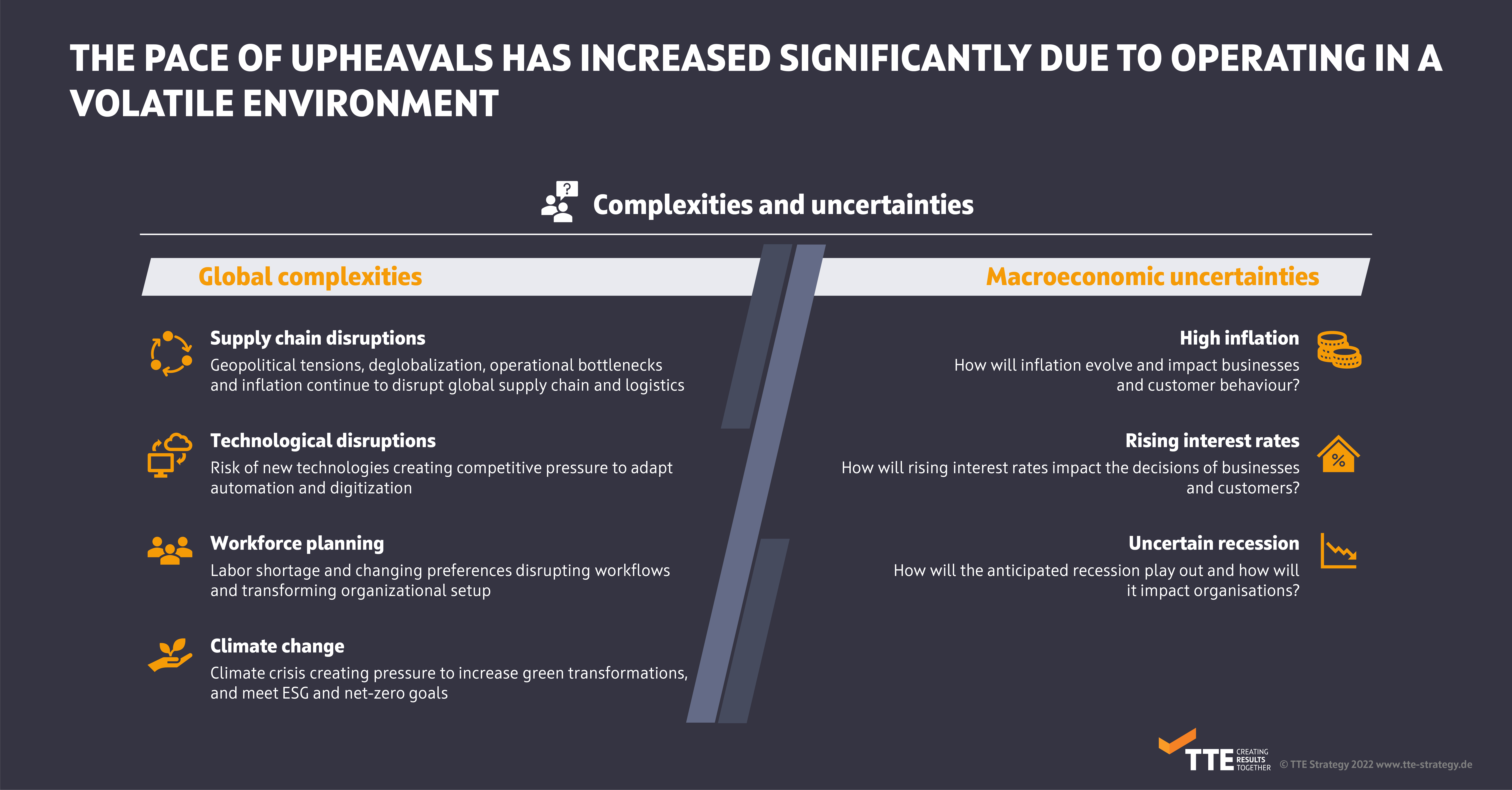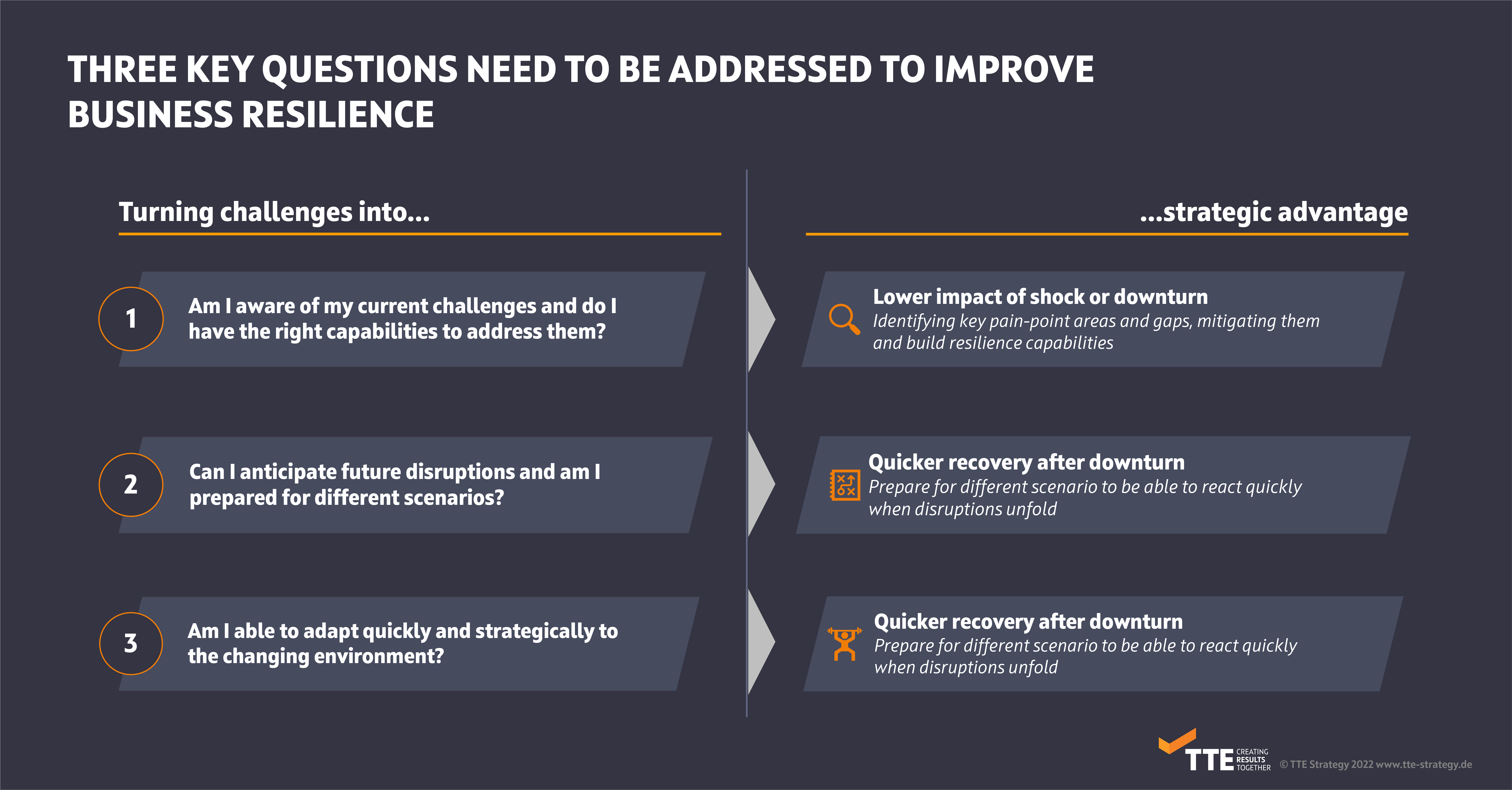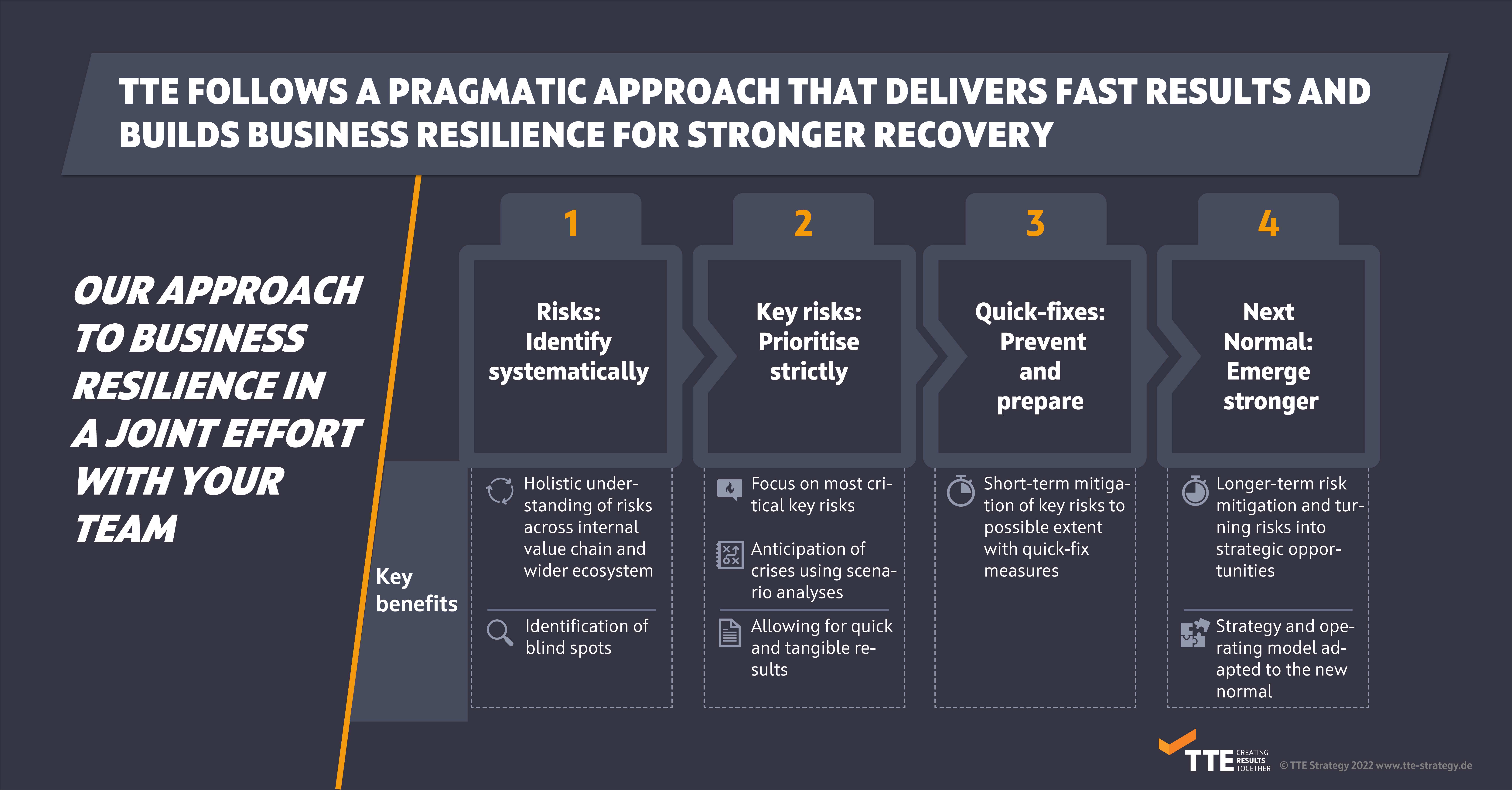
Now with many challenges and crises unfolding in parallel, firms must quickly adapt to a dynamic business environment. They must gain an understanding of their key vulnerabilities, mitigate pain points quickly, and adapt their business models to enable sustainable long-term growth.
How can businesses manage uncertainties and disruptions? The key is resilience.
Challenges in today’s environment
Companies nowadays face an unprecedented array of challenges. Geopolitical tensions, operational bottlenecks, and inflation continue to disrupt global supply chain and logistics. The rise of new technologies is increasingly creating competitive pressure to adapt innovative digital solutions. The climate crisis is pushing companies to increase green transformations and to meet ESG goals. Furthermore, leaders face a rising concern regarding the impact of recession on their businesses. Such a volatile business environment has significantly increased the pace of upheavals.

What is resilience and how can it help?
Resilience is the ability to face disruptions and consistently adapt business models to achieve sustainable long-term growth. Rather than focusing on short-term gains, resilience helps organizations thrive in a volatile environment and turn risks into strategic value.
Running organizations has become much harder today than it was a few years ago. It is becoming crucial for CEOs to take immediate action towards disruptions and plan a long-term strategy for growth and competitive advantage. Business leaders have already started considering resilience as an imperative factor in their strategy and decision-making. The first step in the process is to assess the degree of business resilience by asking three key questions:

Addressing these three key questions can help turn challenges into strategic value.
With many challenges and crises unfolding in parallel, firms must quickly gain an understanding of their key vulnerabilities, mitigate them rapidly, and improve their business resilience as part of long-term-strategy development. It is often observed that companies that perform well don’t wait for recovery; instead, they turn risks into strategic advantage.
TTE’s approach to building business resilience
At TTE Strategy, we redefine strategies by following a strategic approach to build business resilience.

How TTE helped an international packaging company build resilience against the energy crisis
An international manufacturer of sustainable and recyclable packaging material raised concerns regarding the impact of the energy crisis on their business. We helped them with a step-by-step approach towards building resilience in the face of an uncertain crisis. We helped each business function to identify their risks and critical pain point areas. We built scenarios to estimate impact and prioritize key risks. Subsequently, we designed short-term mitigation measures and tracking metrics for the key risks and initiated a long-term roadmap for strategy development.
In a joint effort with the client, we were able to build a contingency plan for multiple scenarios, including mitigation actions per business function. The client was able to protect its business by addressing customer concerns and by being better prepared for gas shortage scenarios.
At TTE, we work in a joint effort with your team to build business resilience. From identifying risks to developing mitigation and long-term strategies, you can benefit from our deep expertise in strategy and transformation consulting.
Do you want to navigate your company through challenges with strategic skill?


TTE Strategy